Housing the Human operates at the edge of the shy sphere of “Practical Futurology.” Based in diverse points of origin, and with distinct approaches, a multi-hyphenate group of architects, designers, and artists are seeking to understand, by way of praxis, what from existing practices around housing and co-existence might credibly continue, and what might plausibly change or be displaced. In this territory of thought, certain words are often bandied back and forth in the thin, stratospheric air where such discussion usually occurs. “Futurology” is one concept commonly ill defined or not defined at all, “innovation” is bounced around incredulously, and the word “speculation” is all too often deployed to mask fluffy lines of thought.
In the context of Housing the Human, however, this discussion is taken seriously. Certain Measures, Mae-Ling Lokko, Simone C. Niquille, Lucia Tahan, and Dasha Tsapenko are engaged with exploring and testing prototypes for a new social geography—whatever that might, or could, be. It’s a poetic cut-your-losses and run towards the future type of project, occupying a space in which technology, architecture and design splice with material culture, sociology, and the nuanced task of real-world speculation. Attempts are important, revisions are required, propositional prototyping is essential, and a degree of failure—aiming for the stars in order to hit the treetops, so to speak—is a realistic, consequential outcome.
On the occasion of the 2019 Copenhagen Architecture Festival (CAFx), and ensconced by a team of advisors—Tatiana Bilbao, Joe Halligan (Assemble), Alfredo Brillembourg (Urban Think Tank), Daniel Perlin (Make_Good), and myself—the five individual research threads were momentarily suspended and presented for scrutiny and conferral. Midway through a yearlong marathon of concept development and real-world trials, a performative exhibition held in the library of the Royal Danish Academy of Fine Arts (KADK) gave space to gauge a public response.
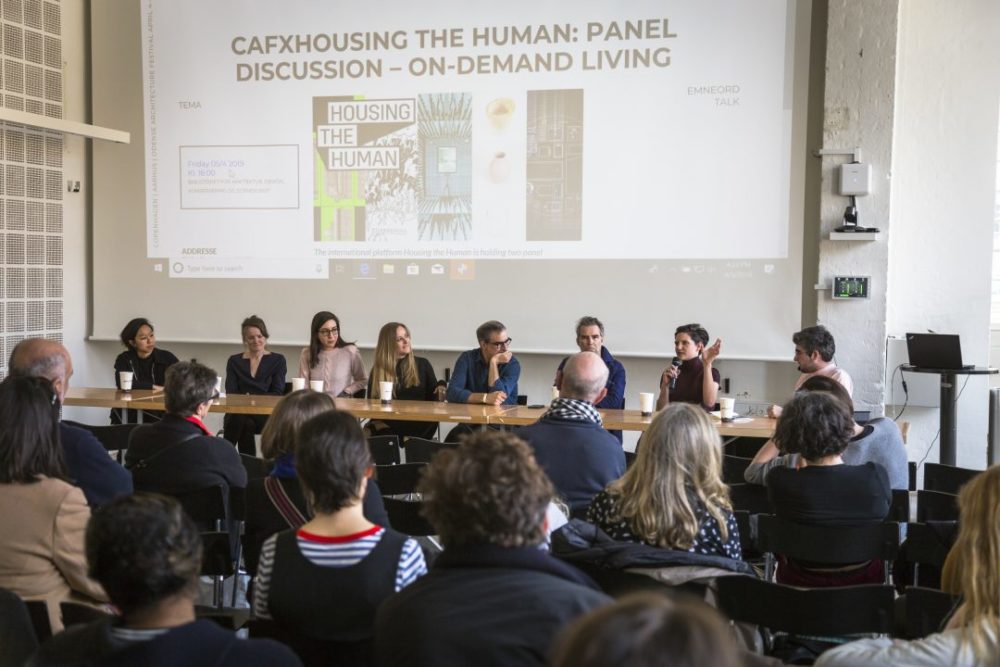
Caring about Sharing
Technologies connected to the home and living are tackling a boggling range of perceived opportunities. Domestic spaces the world over, concentrated on the wealthiest among them, are replete with services masquerading as speakers or screens. We are obsessed by things, and especially those that have been designed. Cloud Housing, three interwoven prototypes under development by Lucia Tahan, is critically investigating this phenomenon by way of a room accessible through mixed reality, a bot app, and an ink-and-paper book. The project’s two-prong approach—to reproduce the optimism inherent in the visual and promotional language embodied by the likes of Airbnb, while considering how a “data-driven, gig economy-powered” housing platform might disrupt the dynamic between real-estate and power—is narrative driven, and elegantly ironic. Terrifyingly, the embedded irony can be difficult to grasp. A convincing installation presented in Copenhagen has taken steps to expose how conditioned many of us are in accepting the new as normal. From the scale of the room to that of the urban environment, the proposal argues that we are and will continue to be remanded in a share-and-surrender world that, to my mind, is unlikely to lead to fairer models for coexistence. The jury is still out, of course, and Tahan’s real-world observations are crystallizing into a clearer speculation around the probable implications of this trajectory.
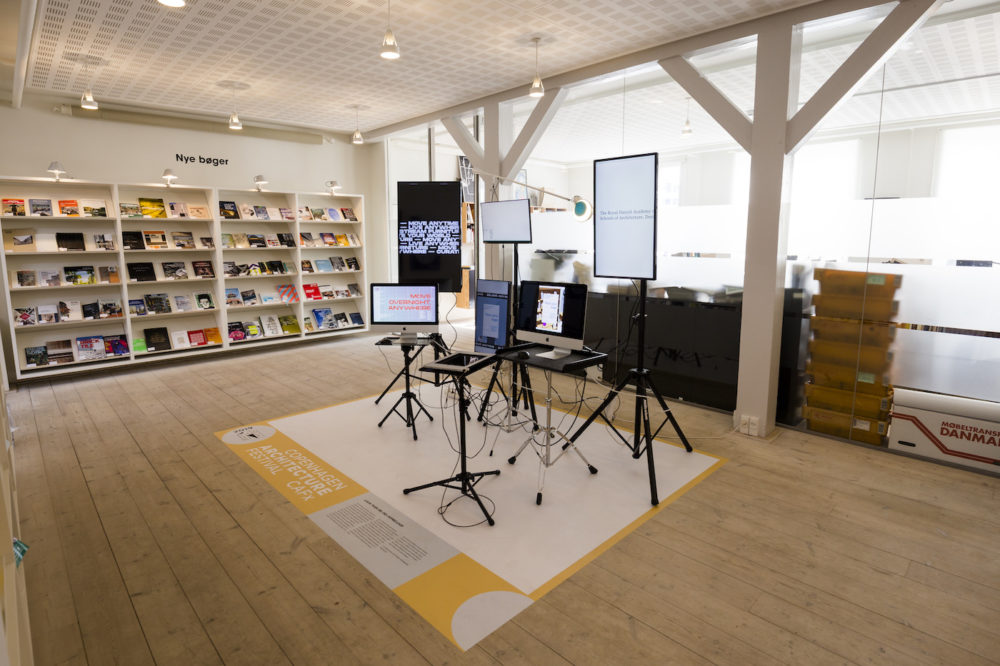
Although anchored in less tangible roots, Certain Measures’ progression reveals a focus on new architectures at the scale of home and of the city. In Home Is Where the Droids Are—the word “droids” itself conjuring a spectacular array of popular and dystopian narratives—the burgeoning commercial possibilities in autonomous tech are projected as an iterated world of common utilities. The question central to their thinking is simple: if nothing is fixed, including but not limited to the kitchen sink, then how might we live in the future? Their proposition, which subverts the perennial idea that ‘the home is where the heart is’, speculates that the home will exist where you will be. In other words, the things that we need to live a satisfying life—nourishment, comfort, and utilities—will swarm about us to meet our needs as and when. We would share much, own little, and understand architectural space—dwelling, most directly—in a radically new way. The proposal underlines the physical presence of the cloud, doing away with its commonly ephemeral definition that is consistently pushed by the giants of the tech-world and accepted by many. Certain Measures’ display in Copenhagen revealed an important approach to the possibilities of autonomy: that the most valuable way forward is to place the human, and communities, at the center of a reflexive discussion.
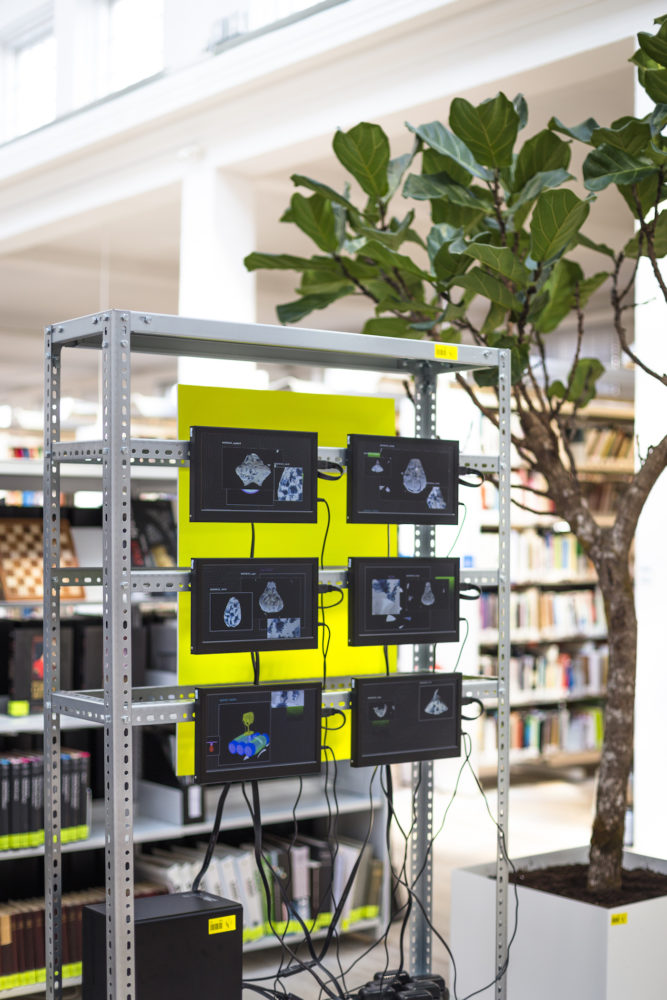
Love and Empathy
With Lovaratory, Dasha Tsapenko is tackling one of the most ephemeral aspects of the human condition. Unsurprisingly, of course, peer-to-peer relationships is also something that big business is capitalizing on in our age of hyper-connectivity. Through unique performative formats Tsapenko is intelligently building the argument that we are on the cusp of the “post-romantic age.” Through propositional research that explores how alternative relationships and family structures will affect or redefine future human habitats, it foregrounds a myriad of assumptions about human connectedness and then starts to challenge them. Central to this project is an oscillation between explanation and discovery. If you or I cannot yet define polygyny, polyandry, or polyfidelity—to name but a few ways of describing possible constellations in our re-understanding of love and relationships—then this project must go some way to explaining them. Only then can new domestic vocabularies, as Tsapenko describes them, be taken from the speculative realm into one that might be practically applied and played with. In Copenhagen, a stage operated as a platform for props and bodies to play with such societal boundaries. For those who felt able to take on performative roles outside of their current identities, it went some way to making sense of the complex world that the project exists within—one that it has an increasingly clearer potential to affect.
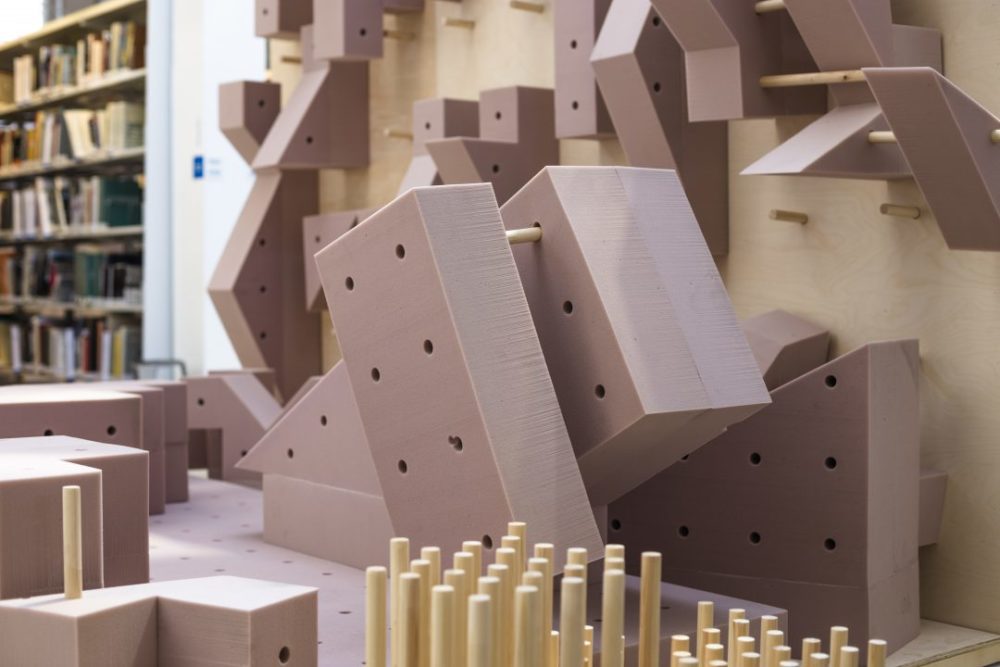
Most of the footage filmed by BostonDynamics of their SpotMini and shared on YouTube or Facebook goes viral. The four-legged (forgive my personification) autonomous robot is, for want of a better turn of phrase, oddly cute. The systems that underpin SpotMini are, however, less so. Simone Niquille’s research is anchored around the accountability of databases, parametric design workflows, and how the classification and measurement systems that they use were established in 16th-Century Europe. The work is delivered with the typical fascination and concern that contemporary existence all too often demands of us. In Copenhagen, this was given representational legibility by way of an ethereal image depicting a “hyperstandardized and exclusive architecture” of human and autonomous machine co-habitation. The empathy one might feel when faced with a film of SpotMini attempting to open a door, for instance, is reflected in the eerie familiarity of a domestic landscape that is in fact the result of a training dataset of 3D objects. (i.e. “living room>couch>blanket; kitchen>cupboard>cutlery”.) Niquille’s work is increasingly revelatory, uncovering the remarkable level of information that belies the simplicity we accept in technology as end-users. Importantly, it is also pointing towards far more prescient underlying concerns inherent to the superimposition of autonomous robotics in the home that relate to the translated biases between human society and globalized systems.
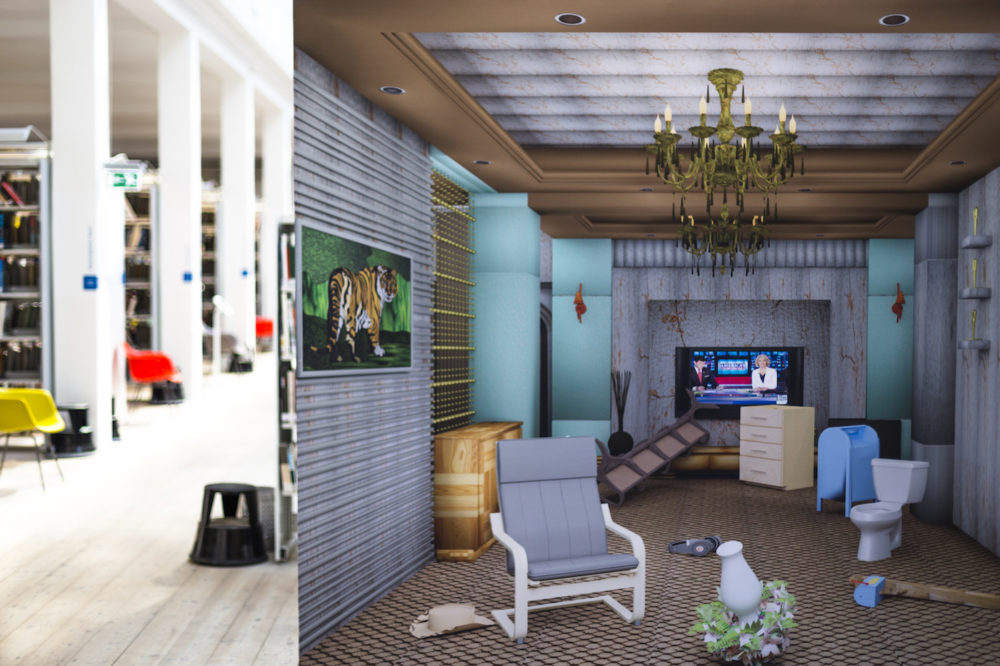
Waste Not
In Agrocologies, Mae-Ling Lokko is developing significant inroads into urgent questions that transcend borders and culture. Spanning critical thinking and active material experimentation, the project centers on the relationship between food production, waste, and the domestic environment. “Agrowaste” by-products have the potential to embed upcycling into the infrastructural activity of a home and a community. This has been tried before, you might argue, but by centering on the domestic typology of the kitchen as we currently know it, the research deals with more fundamental strategies for integrating agrowaste into our daily lives. Manifested in Copenhagen as familiar utensils of very different material expression, bowls, cups, and other types of containers were presented as mycelium-based reinventions. While still at an early stage, the possibilities embodied by this approach were made abundantly clear. (A cocktail bar helped tremendously!) For Lokko, anything “new” should be integrated into human rituals. Cooking, eating, drinking, and cleaning are central to cultures the world over, and through this project they are being convincingly put forward as a living experiment with powerful implications.
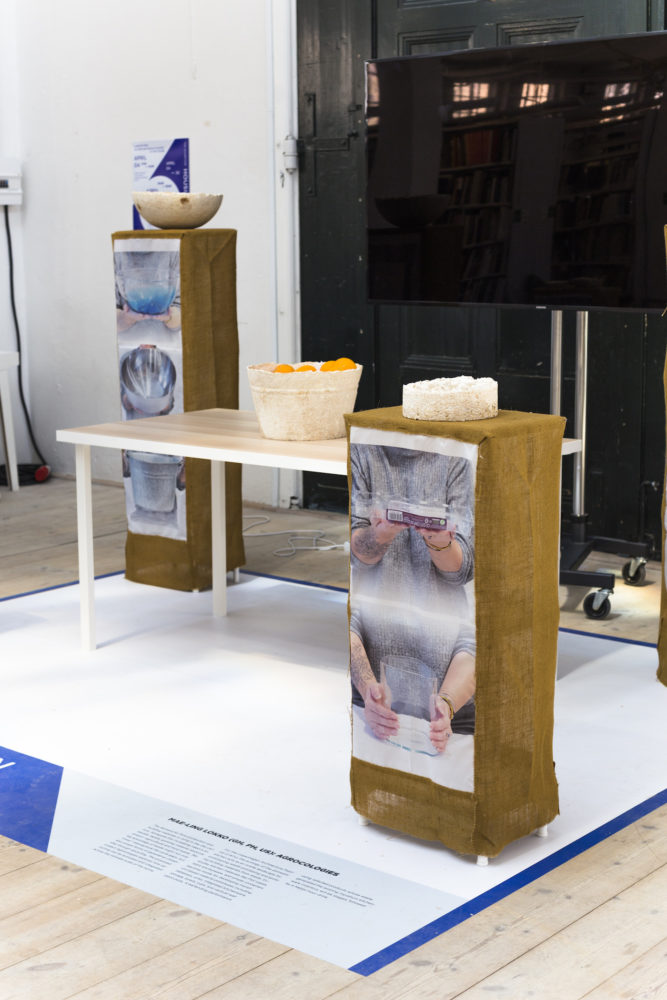
Housing the Human demands much of its participants, while also requiring a high level of public engagement in order to steer clear of cloistered conclusions. Amid a constant need to define, and then redefine, their positions, the challenge facing each project lies in convincing communication. While each research thread is in the complex process of ironing out their respective in-exactitudes, these in-exactitudes should not be buried. This is where the fun, and the larger meaning, lies.